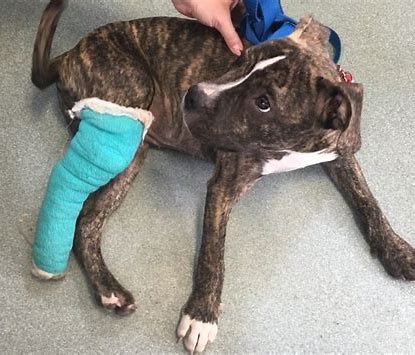What Percentage of Dogs Have Rabies? Surprising Statistics Revealed

What percentage of dogs have rabies? It’s a question that many pet owners may wonder about, especially when it comes to the health and safety of their furry companions. Well, the good news is that the prevalence of rabies in dogs has significantly decreased over the years due to widespread vaccination efforts.
According to the World Health Organization (WHO), the global incidence of rabies in dogs has dropped by approximately 98% since the 1900s. This remarkable decrease is mainly attributed to the implementation of vaccination campaigns and responsible pet ownership practices.
However, it’s worth noting that while the overall percentage of dogs with rabies has decreased, the disease is still a concern in certain regions, particularly in areas with inadequate access to veterinary care and limited vaccination programs. So, understanding the current situation is crucial for dog owners to take appropriate precautions and ensure the well-being of their pets.
In this article, we’ll delve into the topic of rabies in dogs, discussing the prevalence of the disease, the importance of vaccination, and what you can do to protect your furry friend from this potentially fatal illness. Let’s dive in and discover the facts about rabies in the doggy world!
Prevalence of Rabies in Dogs Worldwide
Rabies is a deadly viral disease that affects dogs as well as other mammals. It is a significant public health concern worldwide, with an estimated 59,000 human deaths attributed to rabies each year. Dogs are the primary source of rabies transmission to humans, accounting for approximately 99% of all human rabies cases.
The prevalence of rabies in dogs varies across different regions of the world. In regions where dog vaccination programs are widespread, such as North America and Western Europe, the incidence of rabies in dogs is relatively low. However, in areas where dog vaccination coverage is inadequate, rabies remains a major problem. These regions include parts of Africa, Asia, and Latin America, where canine rabies is endemic and poses a significant threat to human health.
Efforts to control and eliminate rabies in dogs involve mass dog vaccination campaigns, promoting responsible pet ownership, and implementing programs to reduce stray dog populations. Rabies surveillance programs are crucial for monitoring the disease and implementing timely interventions to prevent its spread. Collaboration between governments, public health organizations, and veterinary authorities is essential to combat the prevalence of rabies in dogs worldwide and protect human lives.
Factors Affecting Rabies Rates in Dogs
Vaccination Rates
One of the key factors influencing rabies rates in dogs is the vaccination rates within a population. Vaccination against rabies is highly effective in preventing the spread of the disease, and areas with high vaccination rates tend to have lower instances of rabies in dogs. It is important for dog owners to ensure their pets are up-to-date on their rabies vaccinations to protect both their own pets and the community at large.
Availability of Veterinary Services
Access to veterinary services, including affordable and convenient vaccination options, can also impact rabies rates in dogs. Areas with limited veterinary services may have lower vaccination rates, increasing the risk of rabies outbreaks. Improving access to veterinary care, particularly in rural or underserved areas, can help ensure more dogs receive the necessary vaccinations to prevent the spread of rabies.
Education and Awareness
Education and awareness about rabies prevention are essential in reducing rabies rates in dogs. Public health authorities and animal welfare organizations play a crucial role in educating dog owners about the importance of vaccination and responsible pet ownership. Promoting awareness about the risks of rabies and the benefits of vaccination can help motivate more dog owners to take appropriate measures to protect their pets and the community.
Stray Dog Management
Stray dog populations can contribute to the transmission of rabies. Implementing effective stray dog management strategies, such as spaying/neutering and vaccination programs for stray dogs, can help control the spread of rabies. Collaborative efforts between local authorities, animal welfare organizations, and community members are necessary to address stray dog populations and minimize the risk of rabies transmission.
Surveillance and Response
Active surveillance and prompt response to suspected rabies cases are vital in controlling the disease. Rapid identification and isolation of potentially infected dogs, along with appropriate testing, are crucial for preventing the further spread of rabies. Public health agencies and veterinary professionals should work together to establish effective surveillance systems and ensure timely responses to suspected cases.
Rabies Vaccination Rates in Dogs
Rabies is a deadly virus that affects both animals and humans. It is primarily transmitted through the bite of an infected animal, with dogs being one of the main carriers of the virus. To prevent the spread of rabies and protect public health, it is crucial to ensure high vaccination rates in dogs. Vaccinating dogs against rabies not only safeguards their own health but also creates a barrier between the virus and humans, reducing the risk of transmission.
- Compliance with Local Laws and Regulations: Stay informed about the rabies vaccination requirements in your local area. Different regions may have specific regulations regarding the frequency and timing of rabies vaccinations in dogs. Adhering to these laws helps protect your dog and the community.
- Annual Vaccination Schedule: In many places, annual rabies vaccinations are recommended for dogs. Regular vaccinations help ensure continuous protection against the virus and maintain high vaccination rates within the canine population.
- Puppy Vaccination Series: Puppies should receive a series of rabies vaccinations starting at around 16 weeks of age. This initial series is crucial for establishing immunity and laying the foundation for long-term protection.
- Booster Vaccinations: Rabies boosters are necessary to maintain immunity over time. Depending on local regulations, these boosters may be required every one to three years. Regular booster vaccinations help reinforce protection and should not be overlooked.
- Consult with a Veterinarian: Work closely with a veterinarian to ensure that your dog’s rabies vaccination schedule is up-to-date and meets local requirements. Veterinarians can provide expert guidance and personalized advice based on your dog’s specific needs and circumstances.
By prioritizing rabies vaccinations and maintaining high vaccination rates in dogs, we can help prevent the spread of this deadly virus and safeguard the health and well-being of both our furry friends and our communities.
Rabies Transmission from Dogs to Humans
Rabies is a viral disease that affects the central nervous system of mammals, including humans. It is primarily transmitted through the bite or scratch of an infected animal, most commonly dogs. Understanding the transmission of rabies and taking preventive measures is crucial to protect human health. Here is some important information about the transmission of rabies from dogs to humans:
- Bite or Scratch: The most common route of transmission is through the bite or scratch of an infected dog. The virus is present in the saliva of infected animals and can enter the body through broken skin or mucous membranes.
- Saliva: Rabies is primarily transmitted through the infected animal’s saliva. The virus can be present in the saliva days before the onset of symptoms, making it important to avoid contact with any animal displaying unusual behavior or signs of illness.
- Inhalation: While rare, rabies can be transmitted through inhalation of infected droplets or aerosols, such as during laboratory procedures or certain bat exposures.
- Organ Transplants: In extremely rare cases, rabies transmission has occurred through organ transplantation from an infected donor.
- Exposure to Infected Dog: Close contact with an infected dog, such as being licked on broken skin or mucous membranes, may also pose a risk of rabies transmission.
It is important to seek immediate medical attention if you have been bitten or scratched by a dog or suspect exposure to rabies. Prompt treatment, such as post-exposure prophylaxis (PEP), can prevent the virus from progressing and causing symptoms. Additionally, practicing preventive measures, such as vaccinating dogs and avoiding contact with stray or unknown animals, can help reduce the risk of rabies transmission from dogs to humans.
Most Common Symptoms of Rabies in Dogs
Rabies is a serious viral disease that affects the nervous system of mammals, including dogs. Recognizing the symptoms of rabies in dogs is crucial for early detection and appropriate veterinary care. If you suspect that your dog may have been exposed to rabies, it is important to seek immediate veterinary attention. Here are some of the most common symptoms of rabies in dogs:
- Change in behavior: Dogs with rabies may exhibit significant behavior changes. They may become aggressive, irritable, or unusually withdrawn.
- Excessive drooling: Rabies can cause a dog to produce excessive saliva and drool excessively.
- Difficulty swallowing: Dogs with rabies may experience difficulty swallowing, resulting in excessive drooling and gagging.
- Unsteady or unusual gait: Rabies can affect a dog’s coordination and balance, leading to an unsteady or abnormal gait.
- Seizures: Dogs infected with rabies may experience seizures or convulsions.
- Paralysis: In advanced stages of rabies, paralysis of the muscles may occur, typically starting in the hind legs.
- Behavioral changes: Rabies can cause significant behavioral changes in dogs, such as aggression, uncharacteristic fear, or extreme restlessness.
- Increased sensitivity to light and sound: Dogs with rabies may become more sensitive to light and sound, displaying signs of discomfort or agitation in response to these stimuli.
- Excessive vocalization: Some dogs with rabies may vocalize more than usual, displaying excessive barking, howling, or growling.
It is important to note that these symptoms may vary depending on the stage of rabies infection, and not all dogs may exhibit all of these signs. Since rabies is a fatal disease, prevention through vaccination is essential. Keeping your dog up to date on rabies vaccinations is the most effective way to protect them and prevent the spread of the disease.
Incidence of Rabies in Dogs in [Country/Region]
Rabies is a deadly viral disease that affects both humans and animals. Dogs are the primary carriers of rabies in many regions, including [Country/Region]. It is important to be aware of the incidence of rabies in dogs to take necessary precautions and protect the health and safety of both pets and humans.
- Vaccination: Ensuring dogs are regularly vaccinated against rabies is crucial in preventing the spread of the disease. Vaccination should be carried out as per local regulations and guidelines to maintain the required level of immunity.
- Public Awareness: Educating the public about the importance of rabies prevention, responsible pet ownership, and recognizing the signs of infection can help reduce the incidence of rabies in dogs.
- Animal Control Measures: Implementing effective animal control measures, such as licensing, leash laws, and stray dog management, can help limit the contact between rabid dogs and humans or other animals.
- Rabies Surveillance: Establishing a robust surveillance system to monitor the incidence of rabies in dogs is essential for timely detection, response, and containment of the disease.
- Reporting and Response: Encouraging individuals to report any suspected cases of rabies in dogs to the appropriate authorities facilitates prompt response and necessary actions to prevent further transmission.
By actively addressing the incidence of rabies in dogs, [Country/Region] can ensure the well-being of its residents and minimize the risk of a rabies outbreak. Collaborative efforts between government agencies, healthcare professionals, veterinary services, and the public are crucial in controlling and eventually eliminating rabies in dogs.
Preventing Rabies in Dogs
Vaccination
One of the most effective ways to prevent rabies in dogs is through vaccination. Regular administration of the rabies vaccine helps ensure that dogs develop immunity against the rabies virus. It is important to follow the recommended vaccination schedule provided by veterinarians and to keep up with booster shots to maintain continuous protection.
Avoiding Contact with Stray Animals
Stray animals, especially those exhibiting unusual behavior, may be carriers of the rabies virus. To prevent the transmission of rabies, it is advised to avoid contact with stray animals, particularly in areas where rabies is prevalent. Teaching dogs to stay away from unfamiliar animals and keeping them on a leash or within a fenced yard can reduce the risk of exposure to the virus.
Supervision and Control
Dogs should be supervised and controlled at all times, especially when outdoors. This helps prevent them from encountering potentially rabid wildlife or stray animals. Keeping dogs within a secure and enclosed space, such as a properly fenced yard, can minimize the risk of exposure to the rabies virus.
Proper Animal Bite Prevention
Animal bites, including bites from other dogs or wildlife, can lead to the transmission of rabies. It is important to teach dogs proper bite inhibition and to avoid situations that may provoke aggressive behavior. Additionally, preventing dogs from interacting with unfamiliar or potentially aggressive animals reduces the risk of bites and potential rabies exposure.
Reporting Suspected Rabid Animals
If you encounter a wild animal that is displaying strange behavior, such as aggression, excessive salivation, or disorientation, it is essential to report the sighting to local animal control authorities. They can assess the situation, take appropriate action, and help prevent the spread of rabies in the area.
Public Health Efforts to Control Rabies in Dogs
Rabies is a deadly viral disease that affects both humans and animals, with dogs being a primary carrier of the virus. To protect public health and prevent the spread of rabies, various efforts and strategies have been implemented worldwide. These public health initiatives aim to control and eliminate rabies through vaccination campaigns, surveillance, and education.
One of the key strategies in controlling rabies in dogs is widespread vaccination. Vaccinating dogs against rabies helps create a barrier of immunity within the canine population, reducing the risk of transmission to humans and other animals. Mass vaccination campaigns, often organized by government health departments or animal control agencies, are conducted to reach as many dogs as possible, particularly in areas where rabies is endemic.
Surveillance plays a crucial role in controlling and monitoring the spread of rabies. Surveillance systems are set up to track the occurrence and movement of rabies among dog populations. This allows public health authorities to identify areas with higher infection rates and focus intervention efforts accordingly. Prompt detection and reporting of rabies cases help prevent further transmission and facilitate targeted intervention measures.
Education and awareness campaigns are essential in raising public knowledge about rabies prevention and control. Public health organizations, veterinary professionals, and community leaders work together to educate dog owners and the general public on the importance of vaccinating their pets, avoiding contact with stray or potentially rabid animals, and promptly seeking medical attention if bitten or scratched by an animal. These efforts aim to promote responsible pet ownership and reduce the risk of human exposure to the rabies virus.
By implementing comprehensive strategies that involve vaccination, surveillance, and education, public health authorities can effectively control rabies in dogs and mitigate the risk of human rabies cases. Collaboration between veterinary services, public health agencies, and local communities is crucial in achieving the shared goal of rabies elimination and ensuring the safety and well-being of both humans and animals.
Conclusion
Rabies is a deadly viral disease that affects dogs and poses a significant public health concern worldwide. While the prevalence of rabies in dogs varies across different regions of the world, it remains a major problem in areas with inadequate dog vaccination coverage. Efforts to control and eliminate rabies in dogs involve mass dog vaccination campaigns, promoting responsible pet ownership, and implementing programs to reduce stray dog populations. Education and awareness about rabies prevention, access to veterinary services, and effective surveillance and response systems are also crucial in controlling the disease.
By prioritizing rabies vaccinations, improving access to veterinary care, promoting responsible pet ownership, and implementing effective stray dog management strategies, the incidence of rabies in dogs can be reduced. Collaborative efforts between government agencies, healthcare professionals, veterinary services, and the public are essential in controlling and eventually eliminating rabies in dogs, thereby protecting human lives.






